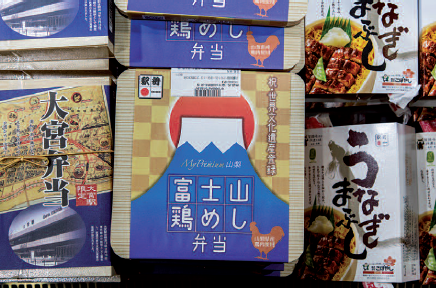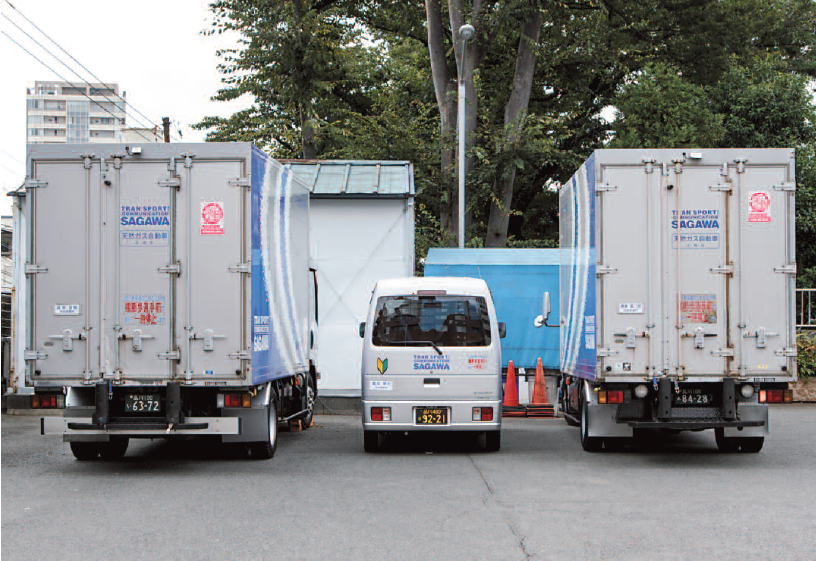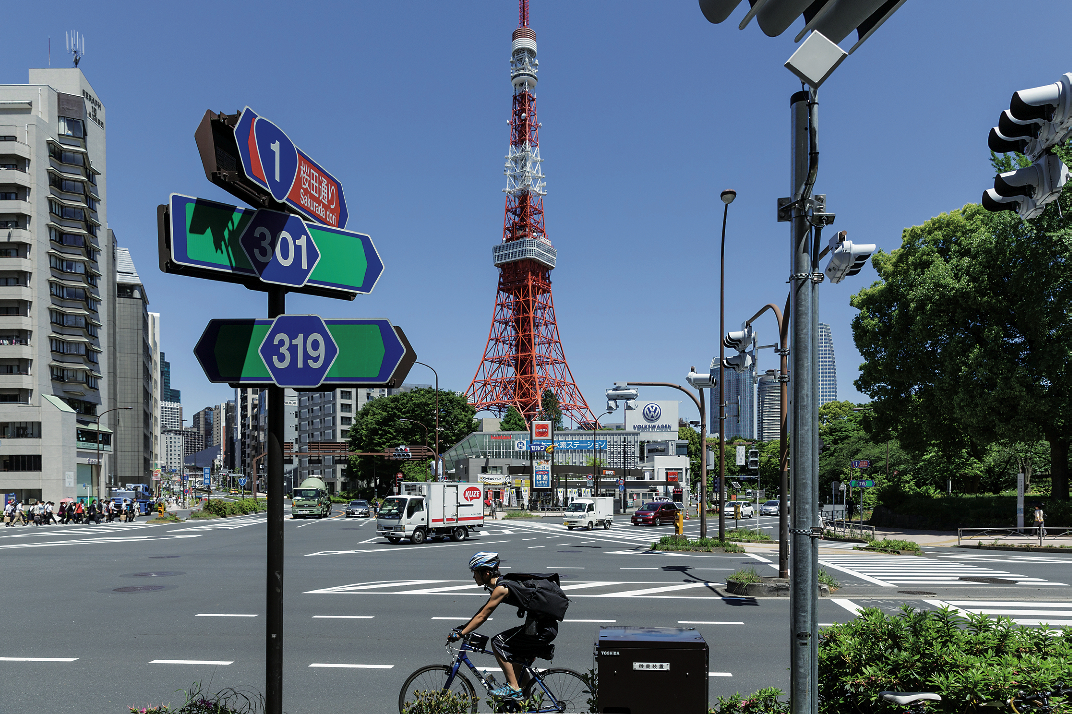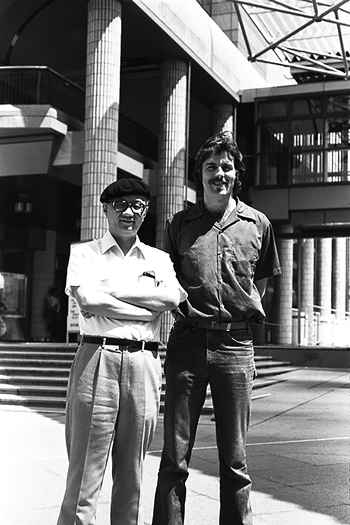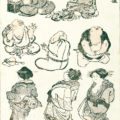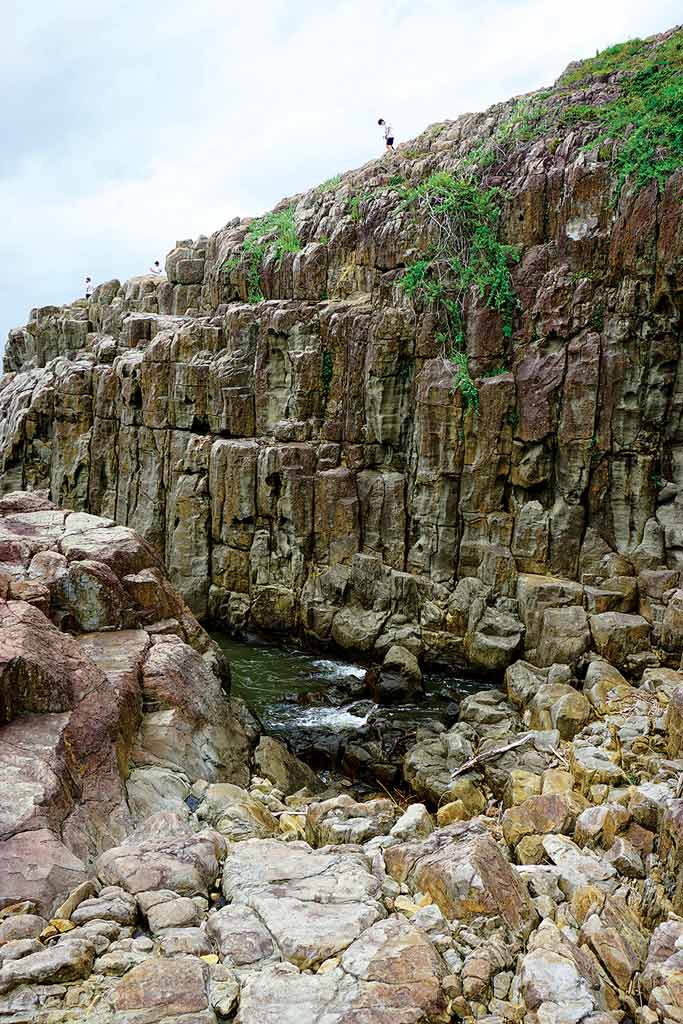

/ Gianni Simone for Zoom Japan
The famous cliffs on the Sea of Japan are the scene of many suicides, but their beauty is life-affirming.
When I stepped out of my hotel in Maizuru, I was welcomed by the deafening sound of the cicadas. Like the ominous chorus of a Greek tragedy, they were warning me of the dangers ahead. This may sound like an exaggeration, but the place I was heading to has already been witness to many deaths. Tojinbo is blessed with a fine example of ragged volcanic coast, arguably one of the most beautiful in the whole archipelago. It is also high on the list of favourite places to take one’s own life. The Japanese have a thing for combining travel and suicide. In the land of the top-three lists (the best three views, gardens, etc.) there is also a hit parade for suicide spots, like Aokigahara Forest, where weekend hikers often come across the shoes left behind by suicides before leaving the walking trail and disappearing among the trees. Or Mount Mihara, an active volcano on Izu Oshima island where in the past one could easily jump into the crater from a vantage point near the top of the cone.
Some will cover hundreds of kilometres to reach such places. I do not know if Tojinbo makes the top three, but an average of 15 people, and up to as many as 25, jump every year from its beautifully terrifying cliffs into the raging waves 21 metres below.
As soon as I got off the bus and hit the trail that hugs the coast, the cicadas’ Greek chorus resumed as if on cue. Being a holiday, tourists were swarming all over the rocks, probably enjoying the morbid thrill of treading on a dangerous spot. It is strange when you think about it, that the same place can elicit such diametrically opposite thoughts: life and death, fun and gloom, excitement and misery.
Everybody was laughing and giggling with excitement, the ladies screaming “yada yada, no way I am going down there” while their boyfriends and husbands pushed them down the steps. Throw into the mix a teenage girl precariously perched on a shaky rock while her friend took her picture (coming soon on Instagram!) and a three- or four-year-old boy standing on the verge of the precipice while his dad recorded that precious moment, and I was left agape wondering what these people were thinking. Then I joined the queue (there were that many visitors) to diligently snap my shots.
The whole area has been developed as a tourist spot complete with promenades, pleasure boats, observation towers and shopping streets. Inevitably, the local businesses have capitalised on the suicides, using them as advertising and exploiting their morbid charm to attract tourists from across Japan.
On the sightseeing boat tour, the guide whispers into the microphone that “I should not say this but Tojinbo is known as a famous suicide spot. There are no barriers [on top of the cliff ] so please explore at your own risk,” he adds in a faintly mischievous tone. “Should you happen to slip and fall, in the worst-case scenario you will hit the rocks and fall into the sea. So please watch your step. People have been known to fall.” Then, even more morbidly, “The success rate for jumpers is 70%. The rest only get half way there.” It comes out as a joke, and the tourists can not suppress a hearty laugh.
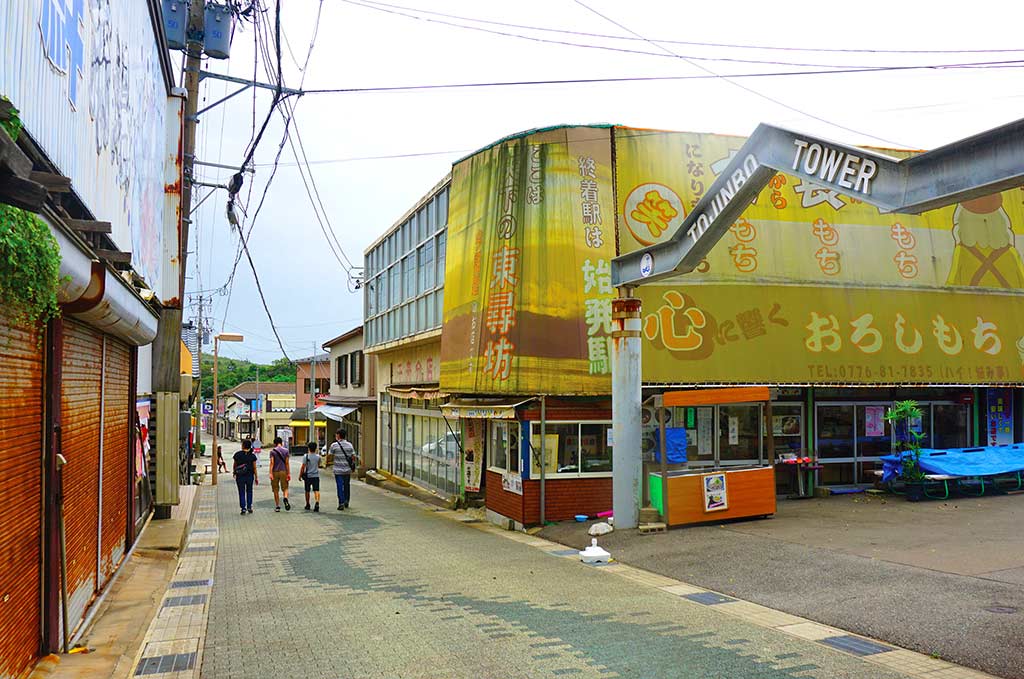
/ Gianni Simone for Zoom Japan
On the other hand, there are people who are actively trying to stop the suicides. One of the shops off the main street doubles as the headquarters of Kokoro ni Hibiku Bunshu, a nonprofit organisation (NPO) whose main purpose is helping people in need and spreading the word about suicide and its causes. Created in 2004 by Shige Yukio, a former police officer, the NPO’s volunteers take turns in patrolling Tojinbo’s paths and cliffs to look for people in trouble and talk them into giving up their plans. They listen to their concerns and try to find solutions to their problems. In almost 20 years, Shige’s group has saved more than 700 people including many whose lives have been negatively impacted by the pandemic. Some troubled people are even allowed to temporarily take refuge at the organisation’s shelter while the staff reaches out to relevant public organisations that may be able to help them in the long term.
Some people say that the place is cursed. The name itself comes from an extremely powerful and evil Buddhist monk who lived in nearby Katsuyama. The other monks at the temple despised him, and one day they invited him on a sightseeing trip to the Mikuni coast. Once there, they got him drunk and threw him into the depths of the ocean to die. However, according to local folklore, Tojimbo’s wrath gave rise to a number of mysterious phenomena, giving the area its name and controversial fame.
Curses aside, Tojinbo has a lot to offer in terms of natural beauty. The rocky coast was formed by volcanic activity that occurred about 12 to 13 million years ago. The area’s peculiar volcanic rock formed when magma penetrated the sedimentary rock layer before cooling and solidifying into gorgeous columnar joints, which were gradually eroded by the waves endlessly crashing against the Sea of Japan coastline.
Another noteworthy feature of the area is the footpath that hugs the Mikuni coast south of the cliffs. The trail is mostly covered by a canopy of trees, but offers several glimpses of the sea. Along the way, walkers are serenaded by birds, insects and the usual suspects (the cicadas, of course).
The birds keep safely out of sight, hidden somewhere in the thick of the forest, but signs along the path will tell you everything you may want to know about the local flora and fauna.
The Tojinbo Nature Forest is home to about 214 species of plants including pine trees and oaks. The area also teems with small red-claw crabs that feed on dead animals, small fish, insects and even plants. They can usually be found in the grass near the area. However, the warm evenings between July and September beckon female crabs out to sea during high tide to release their eggs.
The trail is mostly flat, but slopes uphill slightly on the way to Tojinbo. Unless you are a hardcore walker, doing it both ways is not necessary, so my advice is to go to Tojinbo by bus and then walk back. That way, you will avoid most of the admittedly easy climbing.
Gianni Simone


